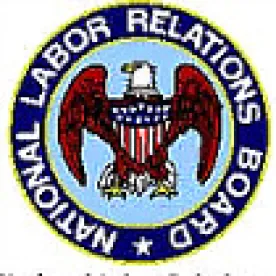The National Labor Relations Board (“NLRB”) is presently wrestling with a particularly important legal issue that has nothing to do with union elections or unfair labor practices. The matter facing the NLRB is much more rudimentary than that – when should NLRB members be recused based upon a conflict of interest. Not to belabor the point (pun intended), but it is critical that NLRB members be able to rule on legal issues presented to them. If matters taken to the NLRB are frequently subject of conflict concerns, the system slows and the wheels of justice do not turn.
How Did We Get Here?
The conflict issue vis-à-vis the NLRB members has largely been without consequence until very recently. NLRB members are appointed by the president with the consent of the United States Senate. With that backdrop in mind, the president wields significant authority in determining the direction labor law takes.
During the first 16 months of his presidency, Donald Trump, as expected, has appointed several new NLRB members that have been viewed as pro-business. One member, William Emanuel, a former partner at a large labor and employment firm, caused the ire of many pro-union advocates by participating in the landmark NLRB decision of Hy-Brand Industrial Contractors, Ltd. and Brandt Construction Co. (“Hy-Brand”) in December, 2017. Hy-Brand overturned the highly controversial joint employer test enunciated in Browning-Ferris Industries (“Browning-Ferris”) and returned to the NLRB’s pre Browning-Ferris test. Hy-Brand reinstated the NLRB position that two or more entities are joint employers under the National Labor Relations Act (“NLRA”) if there is proof that one entity exercised control over the essential terms of employment of another entity’s employees.
Ethical Review Of Hy-Brand
Soon after the NLRB’s decision, pro-union groups cried foul in asserting that Emanuel’s participation in the decision violated ethical rules because his prior law firm had been involved in the Browning-Ferris group of cases. This led the Office of the Inspector General (“OIG”) to issue a memorandum on February 9, 2018 finding that, because Emanuel’s former law firm represented a litigant in the Browning-Ferris case, Emanuel should have recused himself from the Hy-Brand decision, which the OIG characterized as a “do-over” of Browning-Ferris. Emanuel had been a longtime partner at a large labor law firm and appeared on the briefs in the Browning-Ferriscase. The OIG wrote that Emanuel’s participation in the Hy-Brand decision “when he otherwise should have been recused exposes a serious and flagrant problem and/or deficiency” in the NLRB’s processes.
Based upon the recommendation from the OIG, the NLRB issued an order vacating the Hy-Brand decision and reinstating the effect of Browning-Ferris.
What Does The Inspector General’s Position Mean?
The Inspector General’s analysis resulted in Emanuel’s exclusion from an issue of law because, during Emanuel’s time in private practice, he had been involved in representing a client involved in the legal issue under consideration in Hy-Brand. With this in mind, it seems logical to question whether the same analysis would be applied to future cases involving NLRB members. Moreover, does this issue preclusion apply to state and federal judges who have zealously advocated a position on behalf of a client prior to being appointed or elected to the bench? The potential issues that could be created by the Inspector General’s ruling are too enumerable to list.
NLRB Taking Another Look At Conflict Rules
On June 8, 2018, the NLRB announced that it is launching a comprehensive review of its ethics and member recusal rules. NLRB Chairman John Ring said a statement that “[w]e are going to look at how recusal determinations are made to ensure not only that we uphold the Board’s strong ethical culture, but also to ensure each Board Member’s right to participate in cases is protected in the future.” Chairman Ring noted that the NLRB will seek guidance from various groups, including potentially reaching out to President Trump. The clear initiative is to avoid creating issue preclusion within the NLRB that would dramatically limit the number of cases that the NLRB could consider, particularly in situations where you have NLRB members who have transitioned from private practice, as opposed to career government lawyers.
Final Take
Because of the great concern caused by the Inspector General’s memorandum, and its sweeping implications, it is expected that the NLRB will move swiftly in creating a predictable and clear set of recusal rules. Until then, it will be important to keep a watchful eye on matters as they proceed to the NLRB and, perhaps, consider whether a NLRB member will be faced with a difficult recusal decision that leaves litigants unsatisfied with the ultimate result.




 />i
/>i

